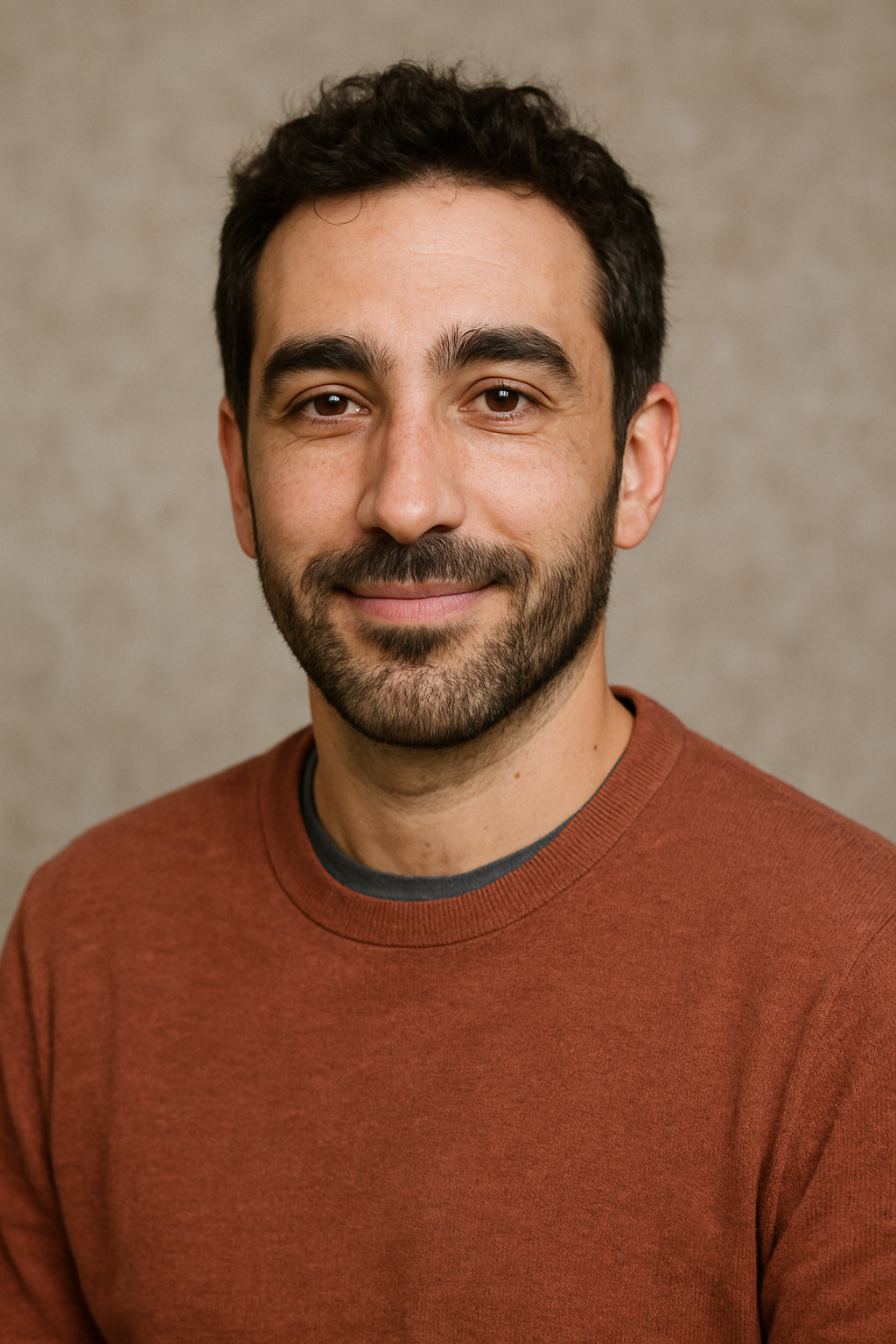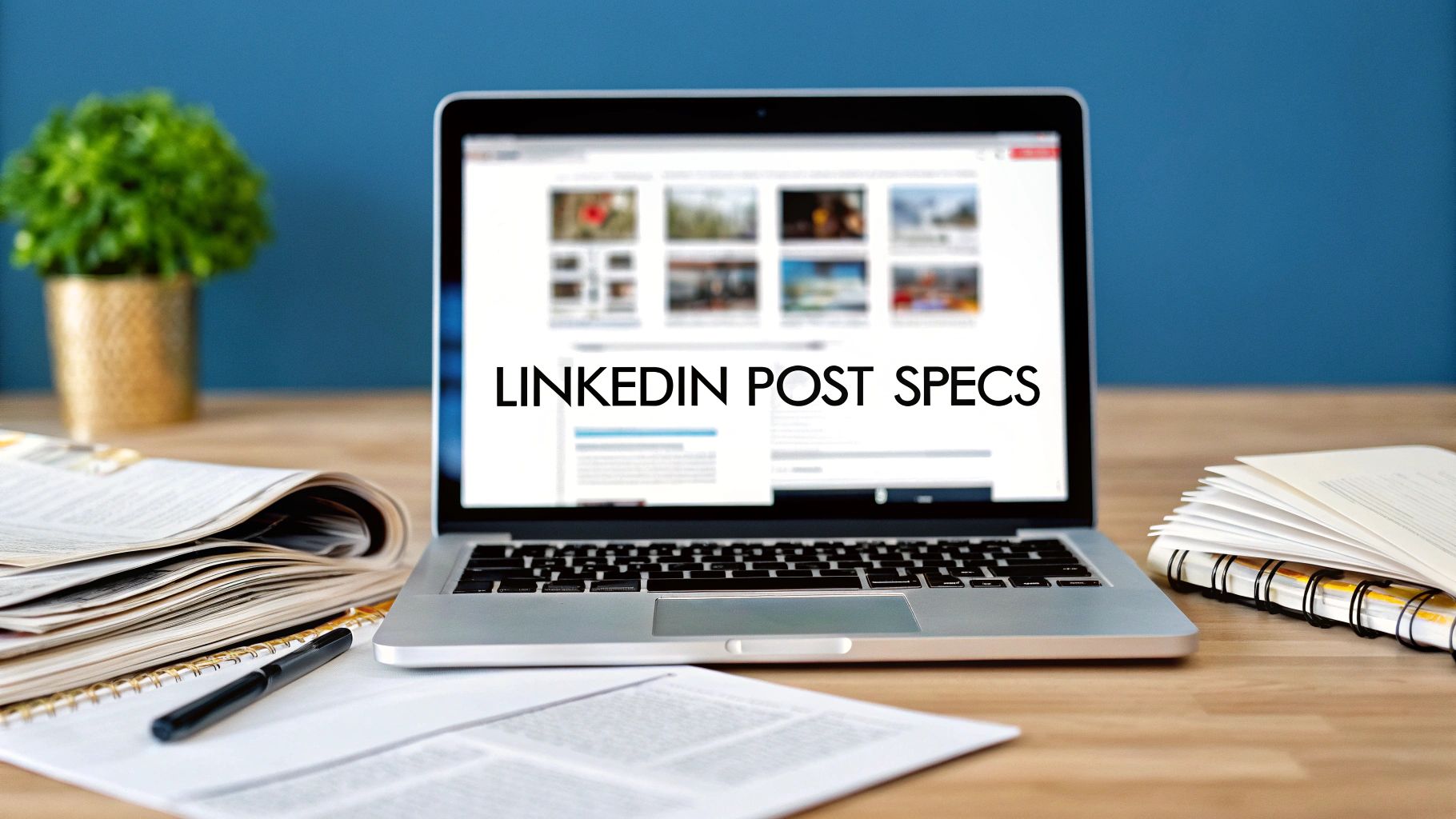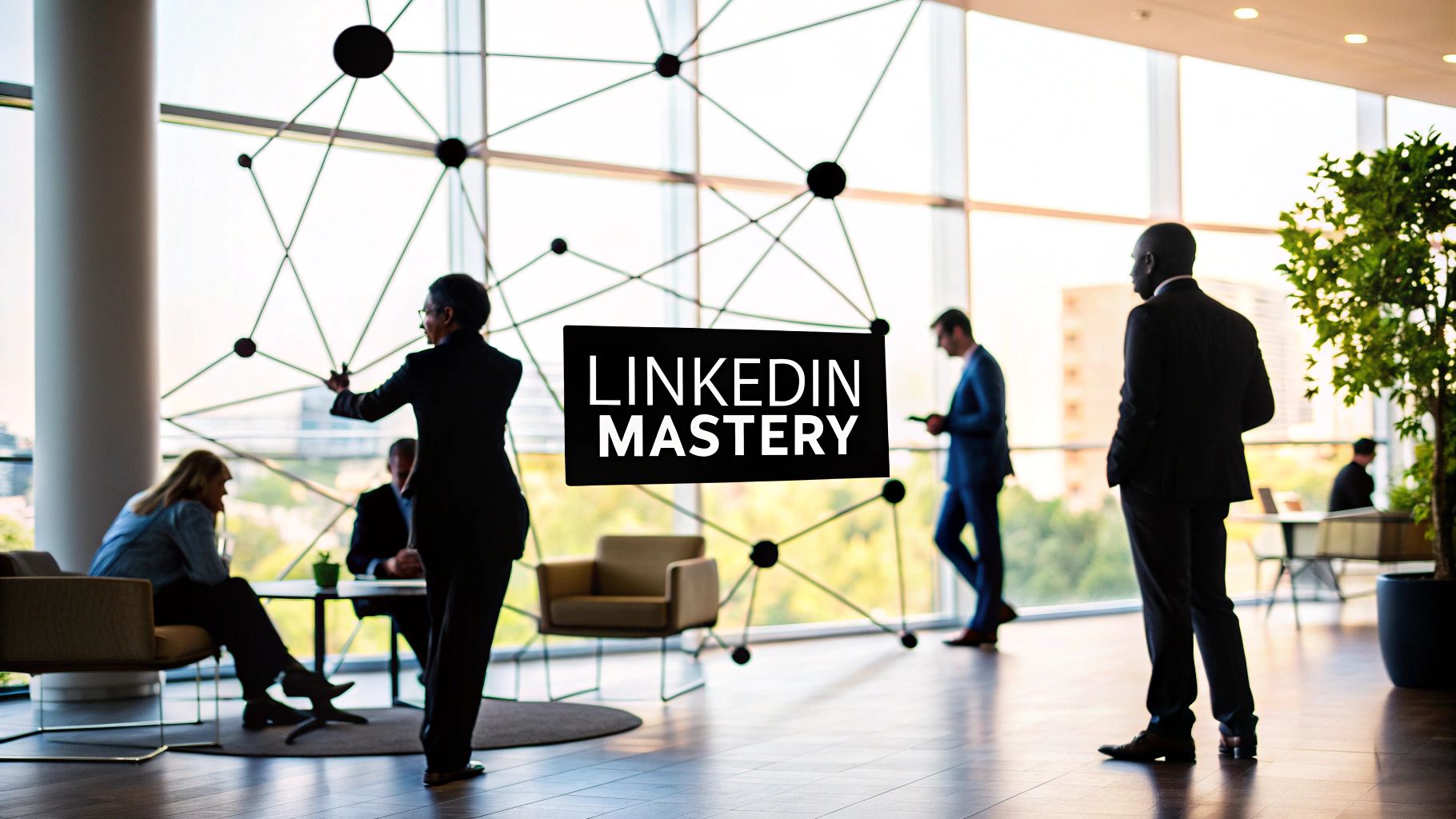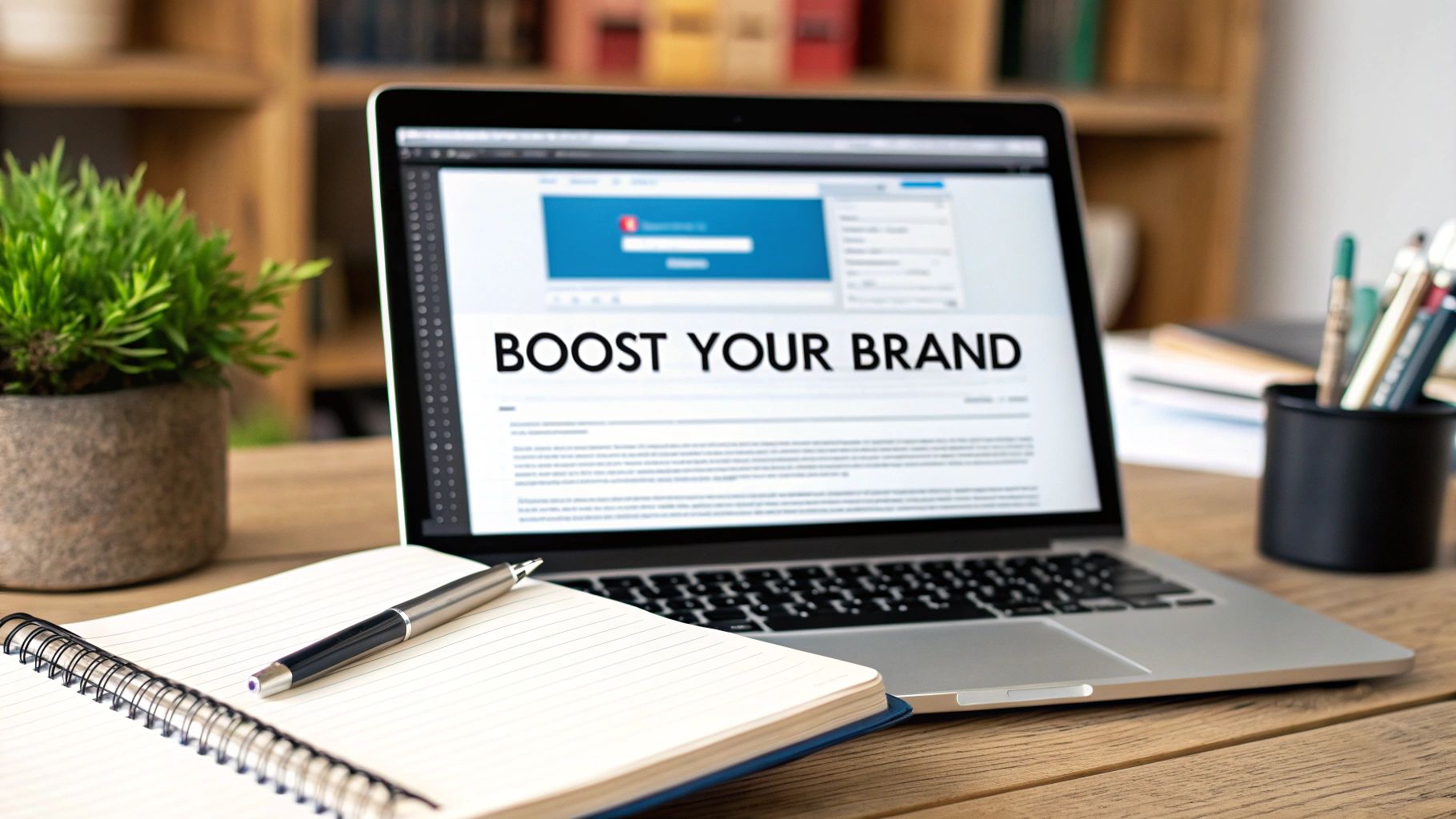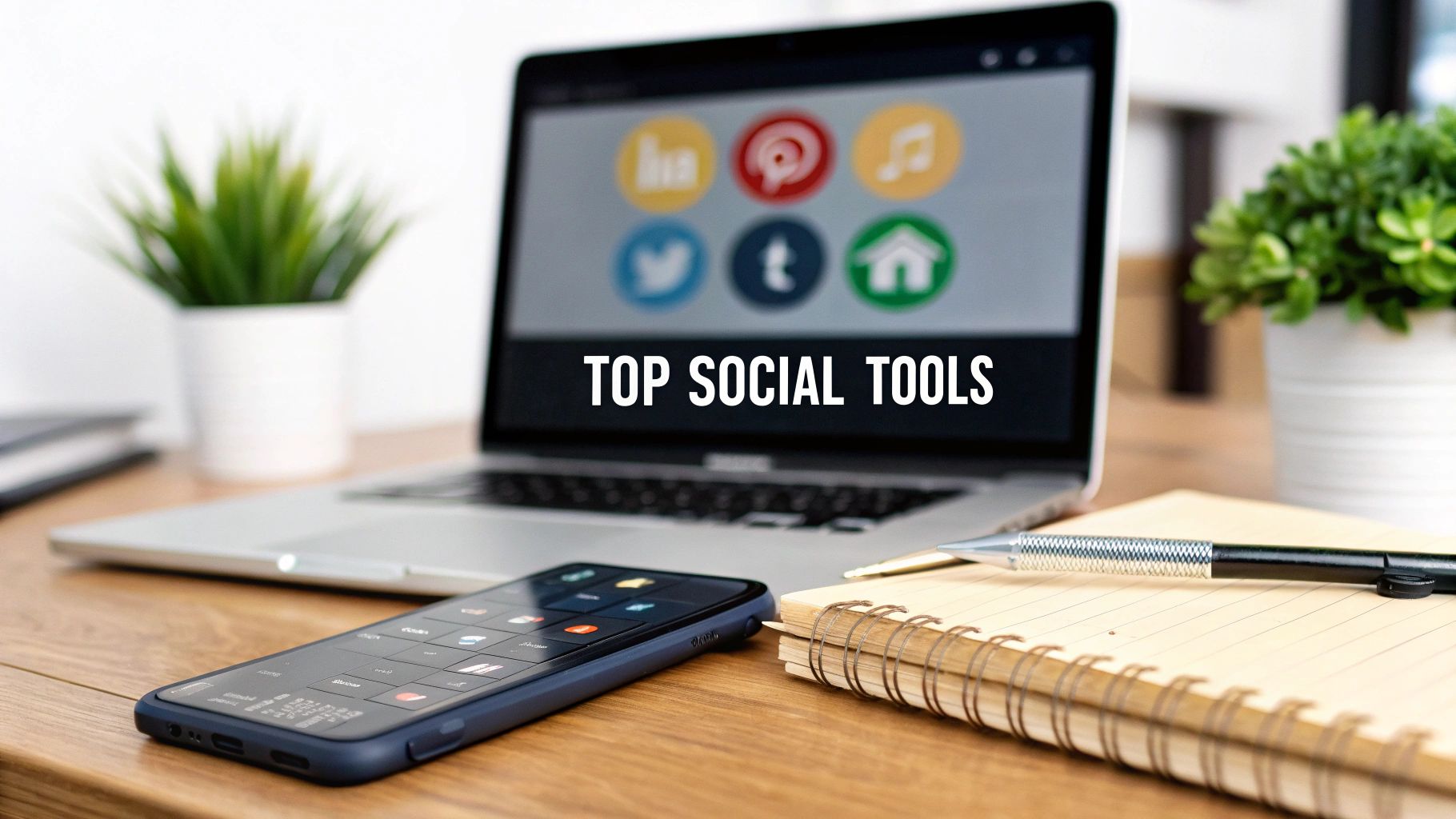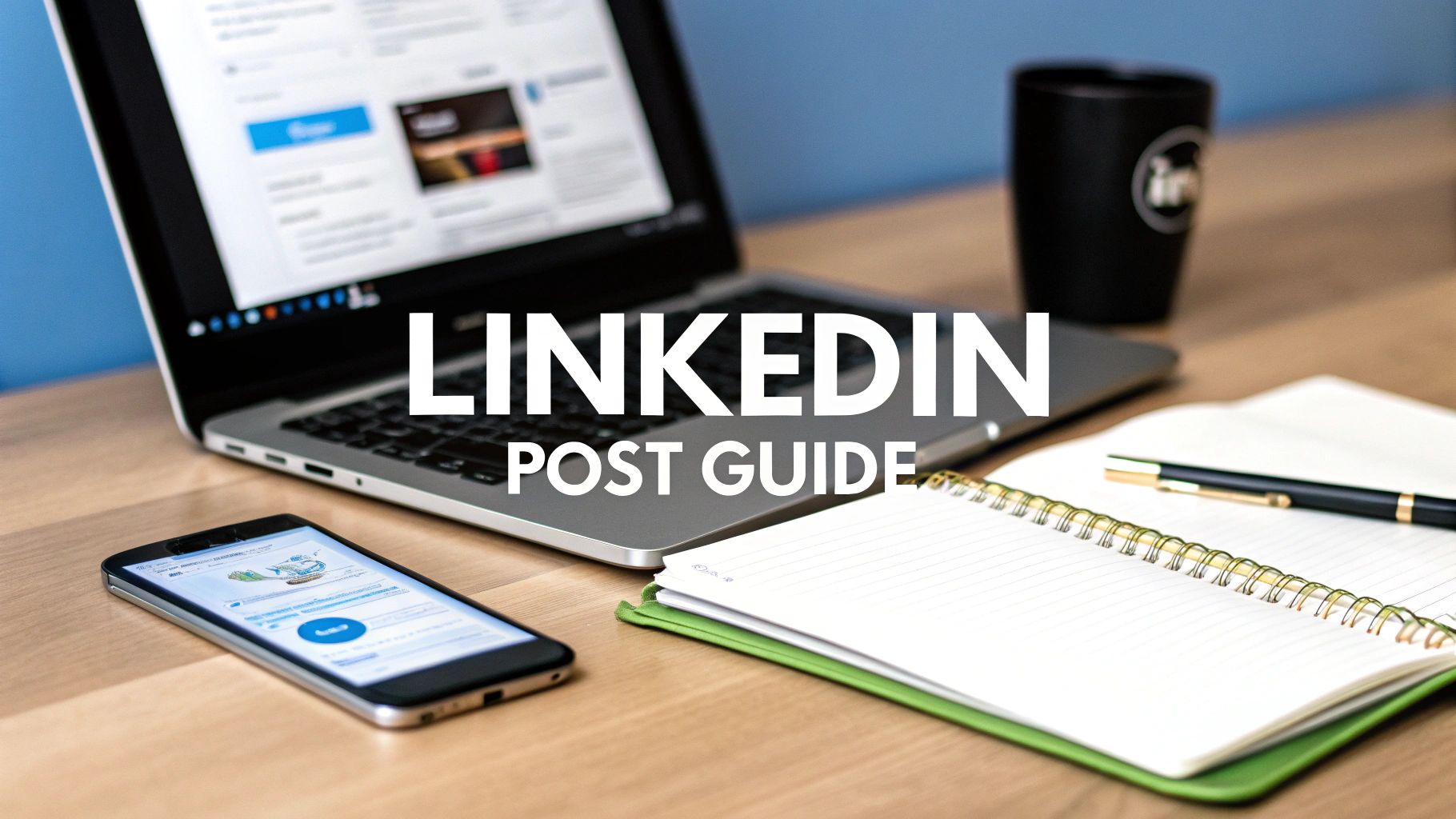
How to Write LinkedIn Posts That Actually Work
Let's get real for a moment: most LinkedIn posts are duds. We’ve all seen them. Your feed is probably a minefield of stiff corporate announcements, vague self-congratulations, and jargon-stuffed updates that get a quick scroll-past and nothing more. If we want to learn how to write a post that actually connects, we first have to dissect why so many of them just don't.
The core of the problem is that most people treat LinkedIn like a megaphone. They broadcast at their audience, pushing a product or touting an award, without considering what’s in it for the person on the other side of the screen.
Think about it from the user's perspective. They're scrolling through a crowded feed, looking for genuine insights, solutions to their own professional headaches, or a relatable human story. A post that only serves the writer is just noise, and our brains are wired to tune out noise.
The secret isn't just what you say, but why you're saying it. If your genuine goal is to offer value, solve a problem, or share a relatable experience, you’re already miles ahead of 90% of the content out there.
The Algorithm Wants a Conversation
The other big reason posts fall flat is a fundamental misunderstanding of how the LinkedIn algorithm works. It isn't just counting up likes. It’s designed to find and promote content that sparks meaningful conversations.
This means things like comments, reshares with added commentary, and genuine back-and-forth discussions are the real currency. A post that reads like a press release is a conversational dead end. It gives people no reason to engage beyond a polite, and algorithmically weak, "like."
You have to shift your entire mindset from "creating content" to "starting conversations." Instead of just stating a fact, wrap it in a personal story. Frame it as a lesson learned. Ask a question that invites people to share their own experiences. This is how you build a community, not just an audience.
For example, consistency plays a huge role here. We've seen that businesses posting weekly get twice the engagement compared to those that post less frequently. It’s about showing up regularly to keep that conversation going. When you move from posting once a week to several times, you're not just creating more content; you're creating more opportunities for connection and dramatically boosting your visibility.
From Scroll-Stopping Hook to Final Hashtag
Let's be honest: the first two lines of your LinkedIn post are everything. Think of it as your digital storefront. If the window display doesn't make people stop and stare, they're not coming inside. You've got maybe three seconds on a busy feed to earn that coveted "see more" click.
This is why a powerful hook is so crucial. It’s not about clickbait; it’s about creating an "information gap." You dangle a surprising statistic, a personal struggle, or a bold statement that makes someone need to know what happens next.
For instance, "I learned a lot about project management" is a guaranteed scroll-past. But what about this? "My biggest project failed spectacularly. Here are the 3 mistakes I'll never make again." See the difference? The second one creates instant tension and promises a story with real, hard-won lessons.
Building a Readable Body
Once you've hooked them, the body of your post has to be a breeze to read. This isn't the place for dense, academic paragraphs. Your job is to guide the reader through your thoughts with clear signposts.
The easiest way to do this? White space. A lot of it. Keep paragraphs to just one or two sentences. This isn't just a stylistic choice; it forces you to be concise and makes your content far less intimidating on a phone, which is where over 57% of LinkedIn traffic comes from.
As you can see, grabbing your reader's attention right from the start is the absolute foundation.
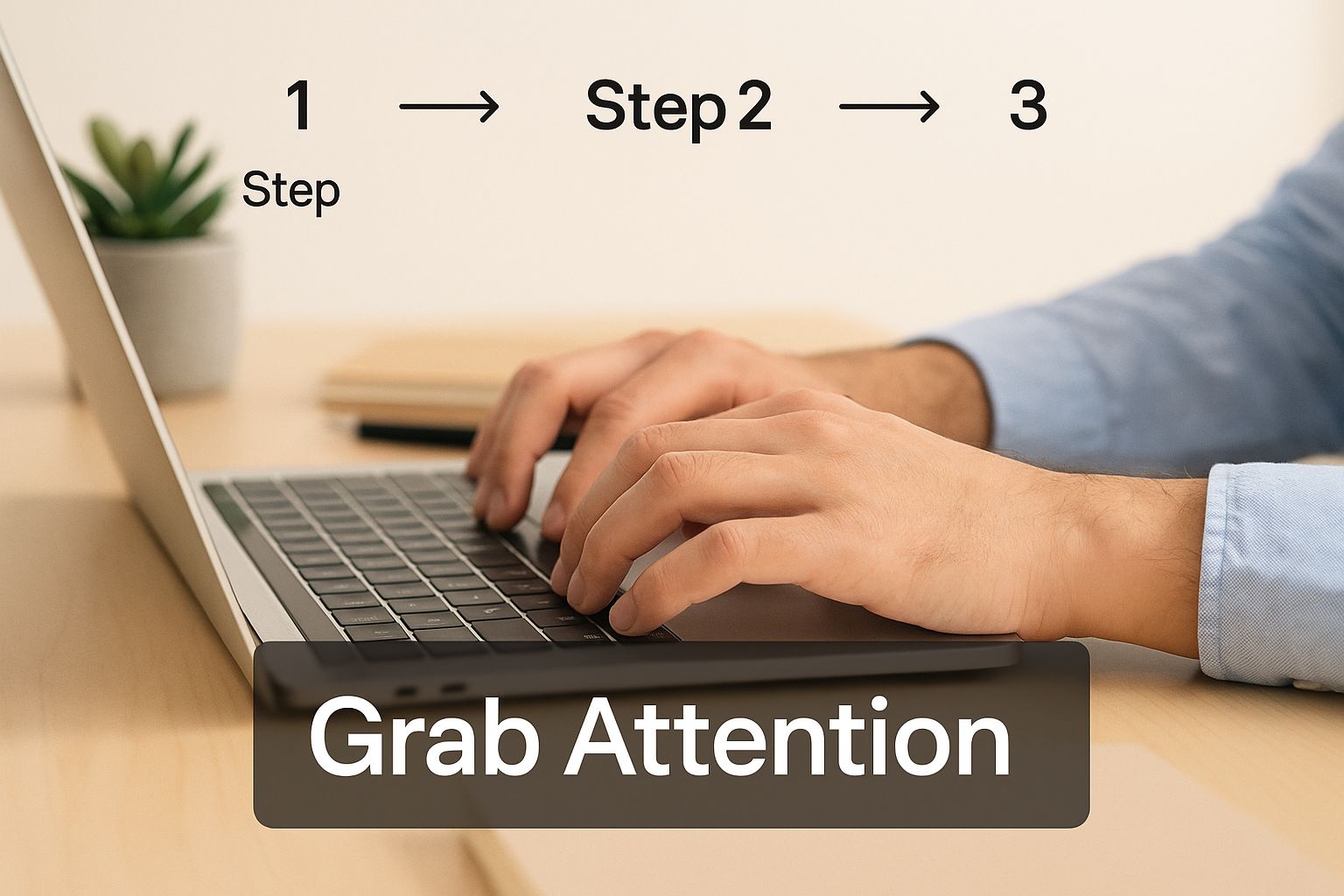
Without that strong opening, the rest of your carefully crafted message might as well not exist.
A well-structured post respects the reader's time. Use simple formatting like bullet points or numbered lists to break down complex ideas into digestible takeaways. This structure transforms a monologue into a scannable, valuable piece of content.
The Call-to-Action and Hashtag Strategy
Every post needs a point. Your call-to-action (CTA) is where you make that point clear. Don't just let your story trail off. Invite people into the conversation.
A simple question like, "What's the biggest lesson you've learned from a failure?" can be the spark that ignites a fantastic comment thread.
Finally, let’s talk hashtags. They’re how LinkedIn figures out who needs to see your post. I’ve found the best approach is a smart mix:
- 1-2 Broad Tags: Think #Marketing or #Leadership.
- 1-2 Niche Tags: Get specific with #ContentStrategy or #B2BWriting.
- 1 Branded Tag: Something like #YourCompanyName (totally optional, but good for tracking).
Aim for 3 to 5 relevant hashtags in total. This gives you great visibility without looking spammy. And while there’s a pretty generous character limit for LinkedIn posts, clarity and brevity will always win the day. Crafting posts that truly connect comes down to understanding the core effective marketing principles that drive engagement.
Choosing a Format That Maximizes Your Message
The format you choose for your LinkedIn post is just as important as the words you write. Think of it this way: a brilliant message stuffed into the wrong package will just get lost in the feed. The real trick is matching what you want to say with the format that’s going to give it the most punch.
Sometimes, a raw, personal story hits hardest as a simple text-only post. The clean look cuts right through the noise, creating a direct and surprisingly intimate connection with your reader. There are no fancy visuals to distract from the power of your narrative.
Other times, a single, powerful image post is exactly what you need. It can add crucial context or emotion that words just can't capture on their own. Picture a candid shot from a team retreat or a sharp-looking graphic that makes a key statistic pop. It’s a classic scroll-stopper that sets the tone in an instant.
Your format choice is a strategic decision. It tells your audience how to consume your content—whether to read a story, watch a demonstration, or swipe through a lesson. Get this right, and you dramatically increase your chances of engagement.
The Power of Visual Storytelling
When you have a complex idea or a step-by-step process to explain, nothing beats a document carousel. Instead of forcing your audience to wade through a wall of text, a carousel lets you guide them through a visual journey, one slide at a time. To get a head start on creating stunning, on-brand visuals, you might want to explore using social media design templates.
This format is an absolute engagement magnet. One analysis of a million posts discovered that carousels drive the highest average engagement, pulling in about 303% more engagement than a standard image post. If you're ready to master this format, we've got a complete walkthrough in our guide on how to post a carousel on LinkedIn.
And finally, don't forget native video. It's easily your best tool for building genuine trust and showing off your expertise. It’s perfect for things like:
- Sharing a quick tip or a mini-tutorial.
- Doing a quick Q&A with an industry peer.
- Giving a behind-the-scenes look at your process.
Video lets your personality come through in a way that text never can, forging a much stronger connection with your audience.
Figure Out When to Post for the Best Results
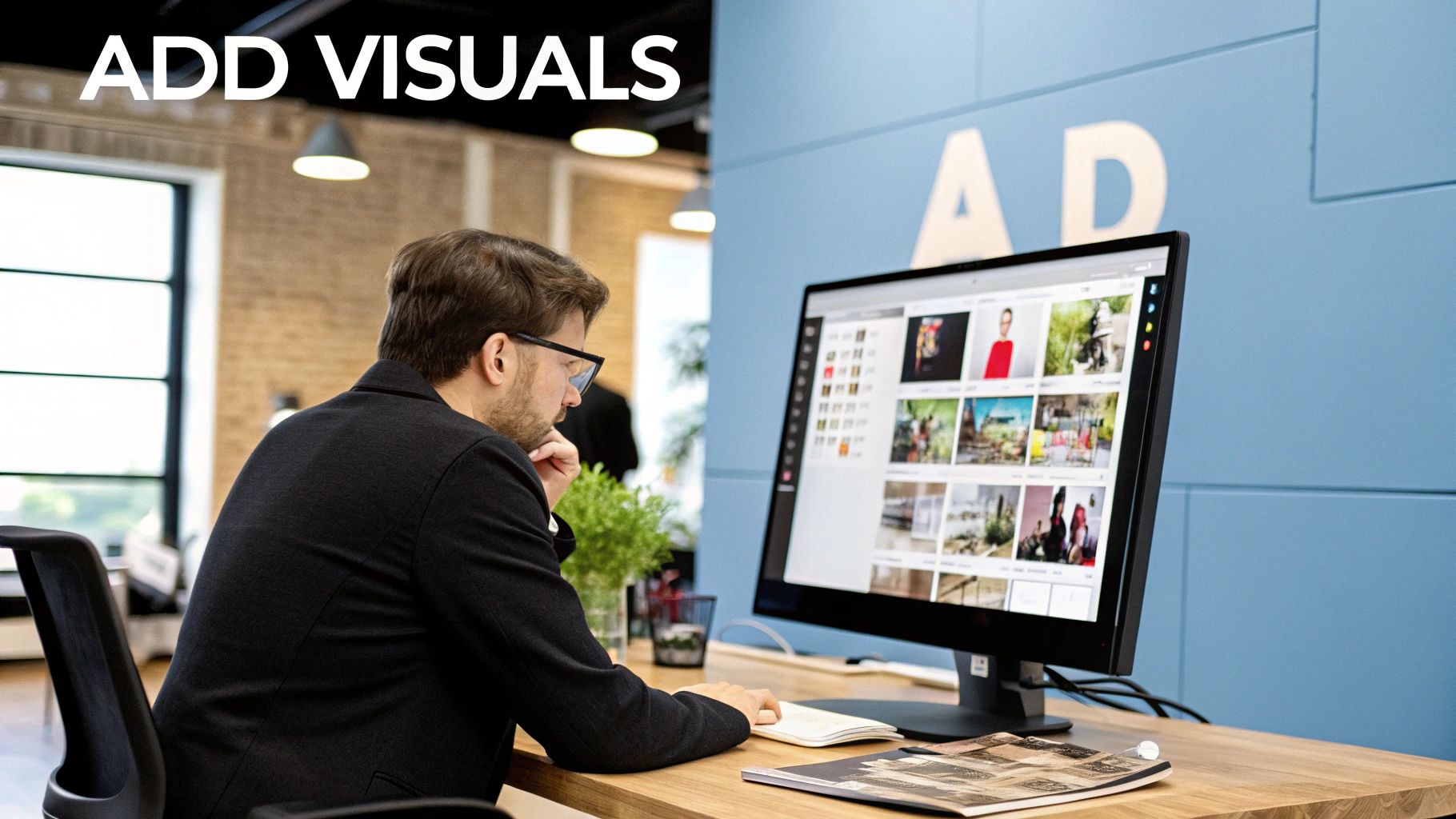
You can write the most brilliant post in the world, but if you publish it when no one’s around to see it, it’s just a tree falling in an empty forest. Getting your post in front of the right people at the right time is just as important as the message itself.
So, where do you start? General studies give us a decent baseline. They often point to weekdays, particularly Tuesday through Thursday, during mid-morning and around lunchtime. It makes sense—that’s when most professionals are taking a coffee break or scrolling through their feed before getting back to work.
But here’s the thing: those are just averages. Your audience might be completely different.
Find Your Audience's Sweet Spot
The real game-changer is digging into your own analytics. LinkedIn itself will show you who is looking at your content and when they’re most active. Start paying close attention to these patterns, and you'll quickly spot the specific times your posts get the most traction.
Don't just follow the crowd. Your best posting time is when your audience is scrolling, not when some generic report says they should be. Use the general advice as a launchpad, but trust your own data to guide you.
If you want to make this even easier, plenty of great social media scheduling tools can do the heavy lifting. Many of them automatically analyze your account's engagement to pinpoint those peak hours for you, taking the guesswork out of the equation.
Always Think Mobile-First
Here's a stat that should grab your attention: 57% of LinkedIn traffic comes from mobile devices. This means if your post isn't easy to read on a small screen, you’re already losing more than half your potential audience.
Keep your paragraphs short and punchy. Use plenty of white space. Most importantly, make sure your hook—that crucial first line—is fully visible without anyone having to tap "see more." If they have to expand the post to understand what it’s about, you've likely already lost them to the endless scroll.
Turning Engagement into a Thriving Community
Hitting "Publish" isn't the end of the process. In reality, it’s just the beginning. The real work—and the real opportunity—starts the moment your post goes live. This is where you shift from broadcasting a message to building a community around it.
Think about it: every comment is an open invitation for a conversation. How you handle those invitations tells everyone, including the LinkedIn algorithm, a lot about you. Replying quickly, especially within the first few hours, signals to the platform that your content is genuinely interesting and worth showing to more people.
But this isn't just about quick, one-word replies. Your goal is to spark real discussions that lead to lasting professional relationships.
The most successful people on LinkedIn aren't just creating content; they're hosting conversations. Every single comment is a chance to add more value, share your expertise, and turn a casual scroller into a loyal connection.
From Comments to Community
So, instead of just a simple "Thanks for your comment," try asking a thoughtful follow-up question. This one small tweak can transform a simple interaction into a much deeper discussion, pulling other people from the sidelines into the conversation. It’s a powerful way to give your post a much longer shelf life.
Here are a few practical ways I like to build that community feel:
- Ask for Specifics: If someone comments, "Great post!" I'll often reply with something like, "Glad you enjoyed it! Was there a specific point that really stood out to you?"
- Invite Other Viewpoints: When a really insightful comment comes in, I might say, "That's a fantastic point. I'd be curious to hear how others here have handled a similar situation."
- Tag in Other Experts: If a comment touches on a topic where a connection of mine is a true expert, I'll tag them. It brings another valuable voice into the mix and shows I’m connected.
At the end of the day, your post is the conversation starter. The real magic happens when you stop thinking like a content creator and start acting like a community builder, one thoughtful reply at a time.
Common Questions About Writing for LinkedIn
Even with a solid strategy, it’s easy to get stuck when you’re staring at that blank text box, ready to write a new LinkedIn post. We've all been there. Getting quick, clear answers to those nagging questions can be the difference between hitting "post" with confidence and just closing the tab.
Let’s go through some of the most common questions I hear from professionals trying to get their content right.
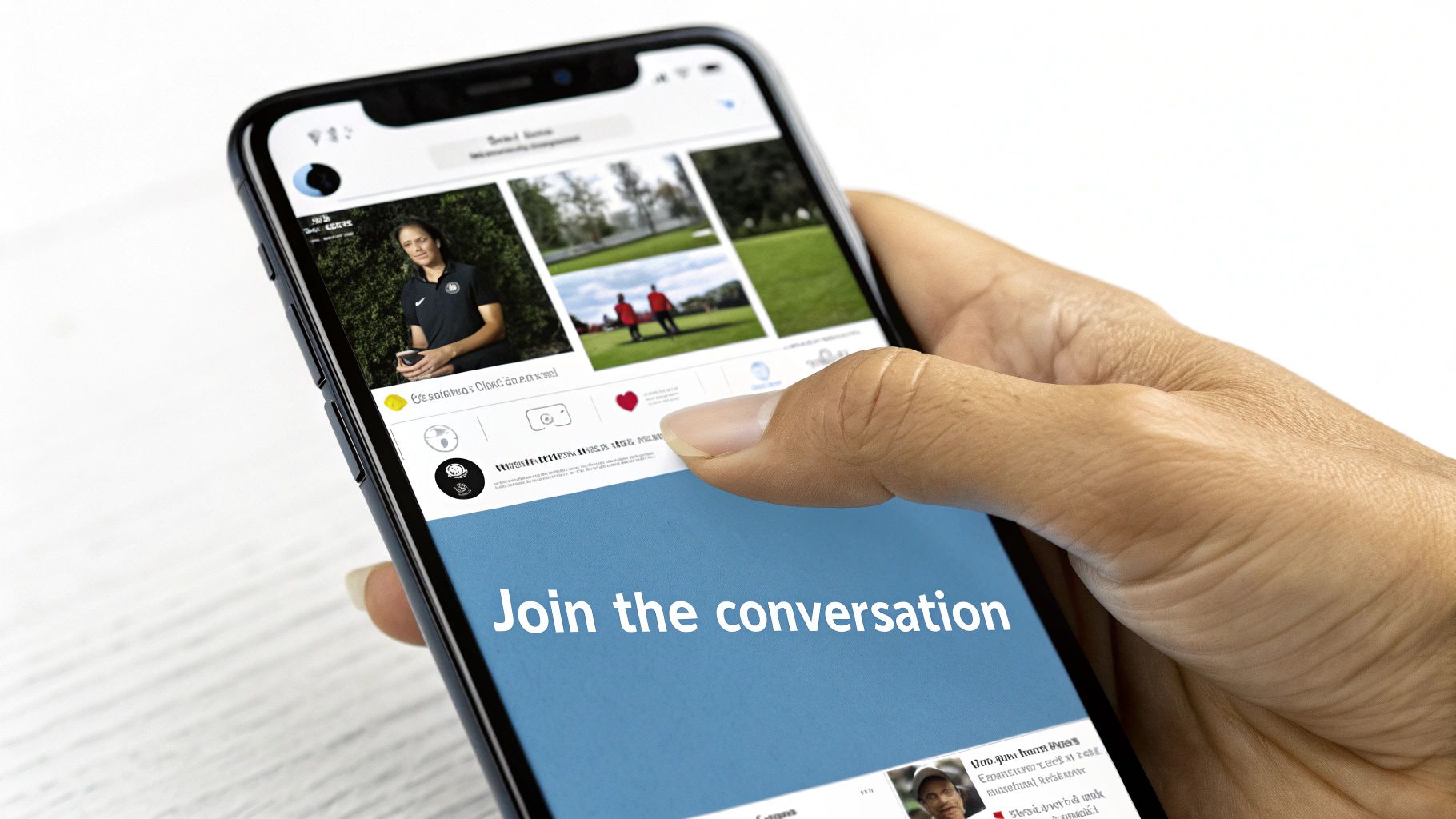
From post length to tagging etiquette, creators often wonder if they're making the most of the platform's features. Nailing these small details can seriously refine your approach and make your content far more effective.
How Long Should My LinkedIn Posts Be?
There’s no magic number, but I’ve found the sweet spot for engagement usually falls between 150 and 250 words. That’s just enough space to tell a compelling story or share a valuable insight without losing someone who’s just scrolling through their feed.
The real key? Make those first two or three lines so intriguing that clicking "...see more" is an absolute must. If your message genuinely needs more room to breathe, go for it. Just never sacrifice clarity and impact for the sake of length.
Are Emojis Unprofessional on LinkedIn?
Not anymore. When used strategically, emojis can make your posts much more readable and approachable. Think of them as visual cues or modern-day bullet points that guide the reader’s eye and inject a bit of personality.
A good rule of thumb is to use one to three relevant emojis to enhance your message, not to clutter it. Stick with universally understood symbols and steer clear of anything that might be misinterpreted or undermine your professional tone.
When Should I Tag People or Companies?
Tagging is a fantastic way to expand your reach, but only when it’s relevant. If you're quoting someone, referencing their work, or carrying on a conversation you had with them, by all means, tag them.
The same logic applies to companies. Tag a business when you’re talking about their product, sharing an experience with their service, or giving a shout-out to an employee. What you should never do is tag a long list of influencers just to get their attention. It’s transparent, feels like spam, and can quickly hurt your credibility.
How Many Hashtags Are Too Many?
To get the best reach without looking desperate, aim for three to five highly relevant hashtags. This seems to be the sweet spot that helps the LinkedIn algorithm figure out who needs to see your content.
A balanced mix works best. I usually recommend:
- One or two broad, industry-level tags (like #Marketing).
- A couple of niche, specific tags (like #ContentStrategy).
- Maybe one personal or branded tag (#YourBrandName).
The goal is simple: help your post find its ideal audience.
Ready to stop guessing and start creating high-impact LinkedIn posts in a fraction of the time? Yooz AI is trained on content from top creators to help you generate unique hooks, engaging posts, and stunning visuals effortlessly. Discover how Yooz can transform your LinkedIn strategy today.




